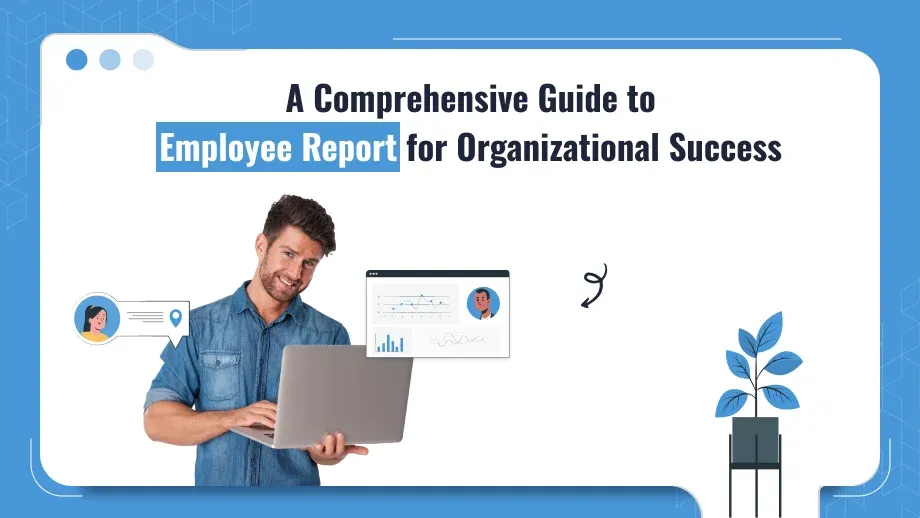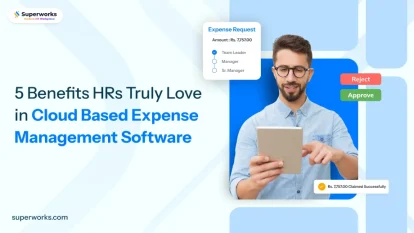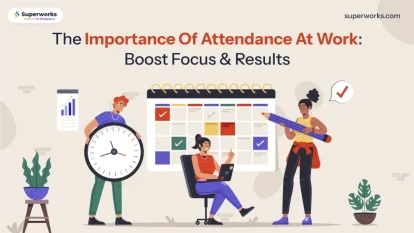
Employee report is the means of performance, productivity, attendance, and general engagement monitoring. Here, the managers and the leadership teams benefit from quality input to support their decisions toward maximum efficiency and ensure that the teams are on course to achieving the business goals. From daily activity reports to performance reviews the data in these reports keeps the workforce running and addresses issues before they become problems.
In this post we will go through the basics of employee report—from what they are, to the different types and how to create and read them for maximum effect. This will help you not only monitor employee activity but also plan based on the insights from these reports.
What is an Employee Report?
A report of an employee report that summarizes the activities, performance as well as attendance, and important metrics for the employee during a particular time. Such reports are said to monitor how employees are contributing to the business and where changes may be necessary.
For example, a daily activity report may entail completed tasks, running projects, and any problems an employee might have had. It means that keeping the supervisors informed regarding the day-to-day running of the team can address their problems accordingly.
Reports on the employees can be utilized for various intents, such as observing their performance over time, measuring job satisfaction, or even attendance reports to be able to see patterns of repetition in absenteeism. That is the flexibility that gives these reports great utility in big organizations and small businesses alike.
Types of Employee Reports
Knowing the types of employee reports will help you decide which report to use. Depending on the type of report, it will give you different kinds of insight, depending on the data that it tracks. Here are the most common types of employees activity reports:
Performance Reports
These usually track the productivity and efficiency of an employee, usually in comparison to KPIs that are set. For example, within a sales team, their performance might be tracked through sales targets, customer acquisition rates, product returns, etc.
Performance reports give the managers information reports used to identify top performers, to assist underperforming employees, and optimize workflows. The reports are also used in setting bonuses, promotions, and raises.
Engagement & Satisfaction Reports
Engagement reports measure how satisfied employees are with their roles, work environment, and management. Data for these reports is collected through employee surveys and feedback forms.
Analyzing these reports can help organizations identify where employee morale may be slipping. If Outsourcing employees feel overworked or underappreciated, this data allows the organization to make changes—whether it’s improving communication, better benefits, or addressing workload.
Diversity and Inclusion Reports
These reports track diversity in the workforce and monitor the following: gender, ethnicity, and age. It also tracks inclusion efforts, for example: equal opportunities in promotions, and equal hiring practices, among others.
Diversity and inclusion direct reportees about diversity and inclusion allow businesses to monitor their efforts at making a fair workplace. For example, whenever the company has dominant demographic leadership, a diversity report can identify these disparities so that such companies may adjust their hiring strategies.
Attendance and Time-Tracking Reports
It is used to monitor the attendance of employees, their punctuality, as well as absenteeism. These reports can help employers see the patterns of attendance in relation to frequent absences or tardiness, which could indicate deeper problems like commitment or personal problems.
Using attendance report software makes it easier to compile accurate records so any patterns can be identified and addressed.
Recruitment and Onboarding Reports
Recruitment reports focus on hiring metrics, such as time-to-hire, job vacancy rates, and candidate quality. All their deliverables are invaluable for insight into the process of recruitment. Most companies use an onboarding report to track new hires and understand how they fare in finding their way into the company during the initial days of employment.
Recruitment and onboarding reports help companies optimize their hiring strategy so that new employees get off to a good start from day one.
Training and Development Reports
These reports measure employee progress through training programs and assess the effectiveness of the training provided. They track participation rates, skill acquisition and how training impacts job performance.
These HR report also act as guidelines to help organizations decide which training programs are delivering the intended results and where adjustments may be needed to suit the needs of the workforce better.
Curious how employee report can transform your team’s productivity?
Take the next step towards smarter workforce management.
Why Employee Data Matters
Employee data is a decision-making tool. Using employee survey data improves decision-making on workforce planning, resource allocation, and performance enhancement.
For instance, performance reports can display how the people and teams are performing; reward the performers, and then support where there is a need for it. Engagement reports can look for trends of dissatisfaction so that organizations can mitigate the work environment before low morale leads to high turnover.
An Attendance report highlights patterns of absenteeism or lateness which could be indicative of deeper problems like burnout or lack of engagement. By reviewing and analyzing these reports regularly companies can proactively manage a healthy productive workforce.
Why is an Employee Report Important?
Report employees are important for several reasons. They bring a data-driven approach to managing employees, so decisions are based on fact not assumption. Here are a few reasons why employee reports are important:
- Performance Management: These reports give a clear view and show how employees are performing so the managers can track their progress, along with a new goal they need to achieve; they also aid in constructive feedback and identify areas for development.
- Workforce Optimisation: Employee reports show underutilized employees or areas where teams may need more support. By analyzing this data managers can reallocate resources and balance workloads.
- Employee Development: Reports on training and development show which employees are growing in their roles and which may need more guidance or coaching. So all employees have the tools they need to succeed.
- Improved Engagement: Reports like engagement and satisfaction reports can show why employees are disengaged and what changes will improve morale. Which in turn will boost retention rates and overall productivity.
What’s in an Employee Report?
The type of report and what it is trying to achieve dictate the contents of the employee report. However, most reports include:
- Basic Info: Name, job title, department, and reporting period.
- Performance Metrics: Employee’s productivity and performance for the reporting period against set KPIs.
- Attendance and Punctuality: Number of days worked, absences, lateness, and sick leave report taken.
- Feedback and Reviews: Qualitative feedback from managers and peers, including any performance reviews during the period.
- Training and Development: Information on training attended and how it’s impacted the employee’s skills and job performance.
How to Create an Employee Activity Report
A productive employee activity report can only be prepared with appropriate strategies and proper tools. Here is how to produce a good report step by step:
- Define Objectives
Clearly define what you want to achieve with the report. Is it to track performance, attendance, or engagement? Setting clear objectives will help guide the data collection process.
- Collect Data
Depending on your objectives collect data using software tools, employee self-reports or manager evaluations. HR software India has great tools for automating data collection.
- Organize the Information
Structure the report logically by grouping information into sections like basic employee information, performance metrics, and engagement data.
- Use Visuals
Data visualization tools like graphs, pie charts, and bar graphs make it easier to present data clearly and effectively. This is especially helpful for showing trends or comparing.
- Provide Actionable Insights
Utilize the data for making informed choices. In the case of example, if you notice the employee’s engagement level for an employee declining Have a 1-on-1 discussion with him about why this is occurring.
How to Analyse Employee Reports
Analyzing employee daily activity reports is where the magic happens. Here’s how to do it:
- Look for Patterns
Look for recurring trends like underperformance or frequent absences. These patterns can indicate bigger issues that need to be addressed.
- Compare to Objectives
Measure employee performance and engagement against set goals. If the employee is underperforming, find out why and develop solutions.
- Actionable Insights
Use the data to make informed decisions. For example if you see an employee’s engagement score has dropped, schedule a one-on-one meeting to discuss the issues.
- Predictive Analytics
Some of the advanced HR software tools offer packages including predictive analytics which take a view into the future predicting the trends working from historical data. This helps organizations act before the problem arises.
Conclusion
Employee reports are the keys to the modern busy business world for enhancing productivity and engagement, making them healthier as an organization. Hence, regular generation and analysis of daily activity reports, performance reviews, and attendance reports help managers stay on top of workforce dynamics and make strategic decisions for success.
Organizations can ensure they are not just maximizing their workforce but also providing an environment that makes employees feel supported and engaged with the effective use of employee data.
Whether it’s tracking daily activity reports to measure employee output or generating performance reports to evaluate against KPIs, using employees reports effectively means every part of the workforce is aligned with organizational goals. Accurate data collection, clear visualization, and thorough analysis mean organizations can stay ahead of the curve, fix issues, improve performance, and retain top talent.





